Review of the Juki TL-2010Q
This post may contain affiliate links which won’t change your price but will share a commission.
Inside: Review of the Juki TL-2010Q
This review of my Juki TL-2010Q sewing machine is a little late, but I wanted to sew on the machine for a bit before I gave an honest review. Of course, there’s always a little story that goes along with a review.
For several months, I debated back and forth about purchasing a Juki TL-2010Q sewing machine in order to expand my quilting skills. I tested it twice in local stores as well as saw it demonstrated at Quilt Market. For the most part, I was extremely impressed with the machine and how it was totally designed for quilters.
I emailed and called friends who owned this machine and asked their overall opinion. After all of my research and questions I knew that the Juki TL-2010Q would be an excellent choice for me as a new quilter. In late December, I finally made the decision to purchase this machine.
Do I Really Need Another Machine?
First, I thought I’d talk a bit about why I would need a machine that is specific to quilting when I own two perfectly perfect Bernina’s that can do basically the same thing.
The main reason is best illustrated in the following photos. I’m using a large Mason jar to show the differences in size so you can see where I gain the most benefits from the new machine.
In this image of my Bernina notice how low the harp and needle space are. In order for me to see what I’m sewing when free motion quilting, I have to really hunch way over to have any sort of visibility.
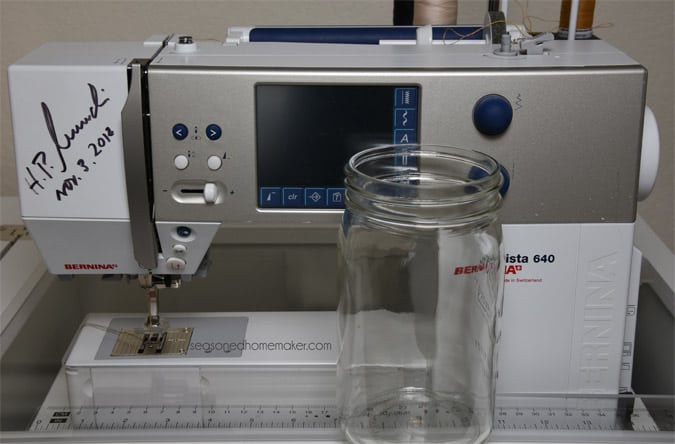
This image shows how small the harp area is on the Bernina. While perfectly suitable for most sewing projects, free motion quilting can be a real challenge.

One of the main reasons I purchased the Juki is visibility for both piecing a quilt as well as free motion quilting. Notice how much more height the Juki has compared to the Bernina.
The visibility on the Juki is amazing and it’s easy to see why this makes it so attractive. I immediately saw a difference in my ability to free motion quilt because I have way more control when handling my quilting projects.

The harp space on the Juki is more than adequate for my purposes. It allows me to work well with most size quilts and have plenty of room to maneuver the quilt.
I know that there are lots of choices with high-end machines that have larger harp areas, but the cost compared to the Juki is roughly 10 times more ~ which made the Juki the best value for me. Personally, I did not think I could justify on any level spending over $10,000 on a sewing machine {although I’d do it in a heartbeat if money were no object)!
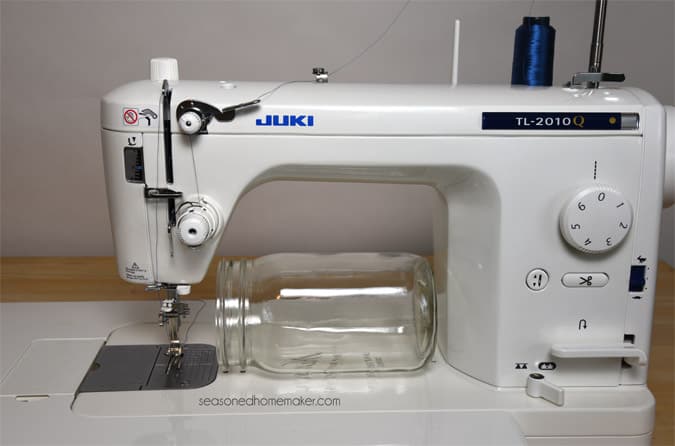
The Details
Now for the nitty gritty details. The Juki is a single-needle, lock stitch, high performance sewing machine. What does that mean? The machine only sews straight stitches – however, they are excellent straight stitches that don’t tangle or get bird’s nests on the under-side. It has a super-fast motor similar to a commercial machine.
When Juki designed this machine they put things on it that simplify and speed up quilting. My favorite features are the needle up-needle down, speed control (see that little rabbit on the right!), and the thread cutter which is engaged when you rock your heel back on the foot pedal!
So, here’s where the real benefits to these features shine. When piecing a quilt you literally never have to stop and cut anything. Just rock your heel back and the thread cuts, then on to the next piece. While I have a similar feature on my Bernina, this one is really made for piecing. It’s fast and efficient.
Another huge difference is the way the needle and bobbin sit. It is designed like a commercial machine with the bobbin placed on the left. Notice the hinged area where the bobbin would get inserted. Rather than being in front of the needle, it’s facing the left side of the machine.
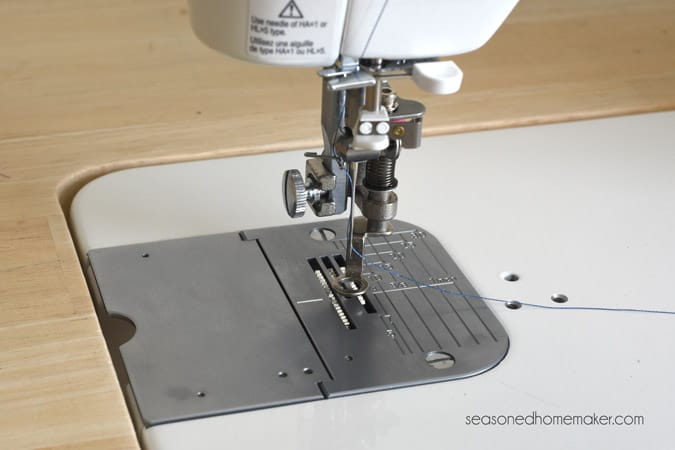
And that’s not all that’s different. The needle threads from left-to-right rather than front-to-back which is similar to industrial machines. Combined with the straight-stitch only feature; this means secure, even stitching.
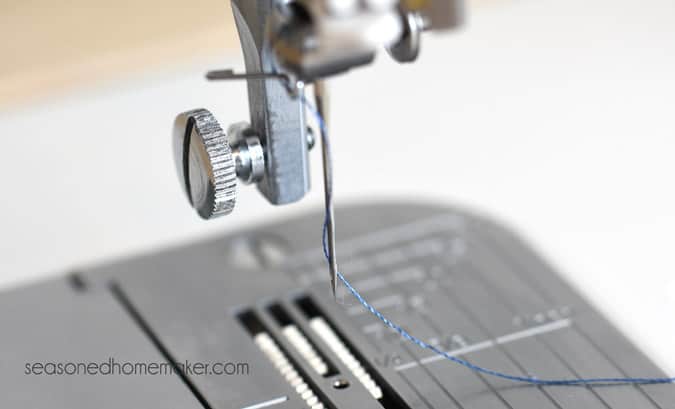
Another difference is the way you feed the thread. Notice how it loops over and under before going through the tension dial. I can use large spools of thread on the telescoping thread holder and get even stitches that never break.
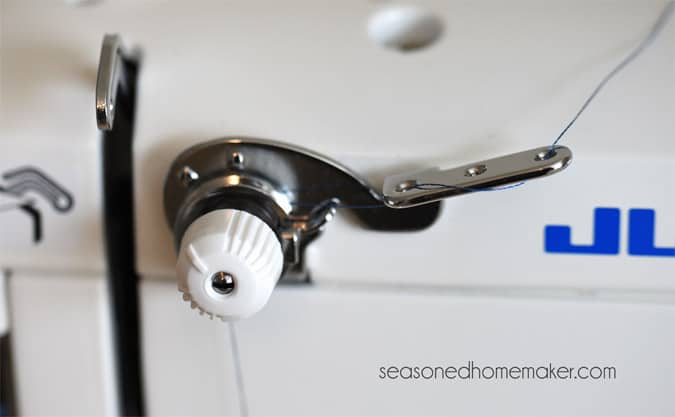
So, not everything is sunshine and lollipops with this machine. When doing my research I noticed lots of people complaining about the lighting. This photo tells it all. It’s kind of a weird spotlight which makes it hard to see well.
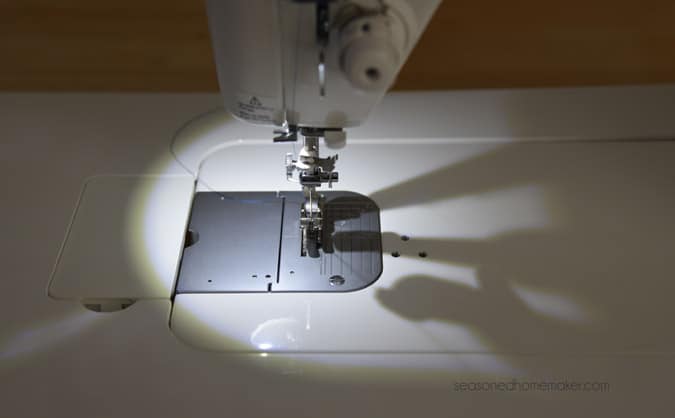
This was an easy remedy. I purchased a sewing machine LED lighting kit that under-mounts on the harp space. (affiliate) Notice how nice and even my lighting is now. The lighting kit is $30 and can be used on any sewing machine. It took about 5 minutes to attach and (as you can see) it is a total game changer for lighting.
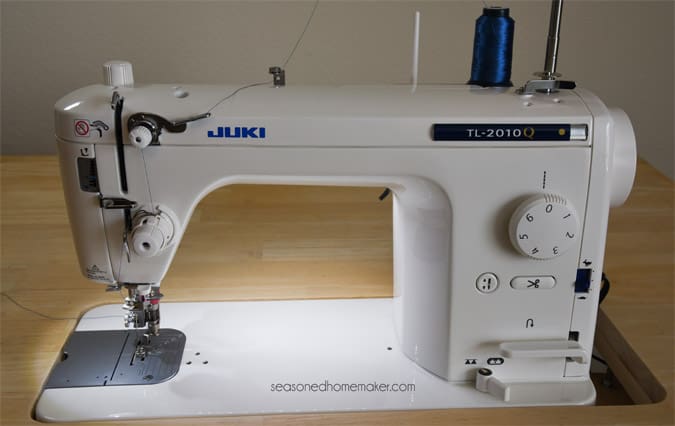
The Benefits
- The machine comes with several feet, including a walking foot. The feet are just so-so in my opinion. I am used to Bernina feet which are beyond excellent. While the Juki feet are perfectly adequate, they could be improved. Nevertheless, they do not in any way hinder my ability to piece or quilt. I was told that some Janome feet will work with this machine, and I will probably check them out once I’m more proficient with my free motion quilting.
- Another reason I purchased this machine is the ability to attach it to a Grace quilting frame for longarm free motion quilting at a fraction of the cost of a longarm quilting machine. I can even purchase a stitch regulator to get even stitches. I have a friend who found a used Grace frame so I am keeping an eye out for one although I have no idea where I would put it. In the mean time I am able to practice free motion quilting sitting down because my husband converted a table into a very nice quilting surface. (see the above photo)
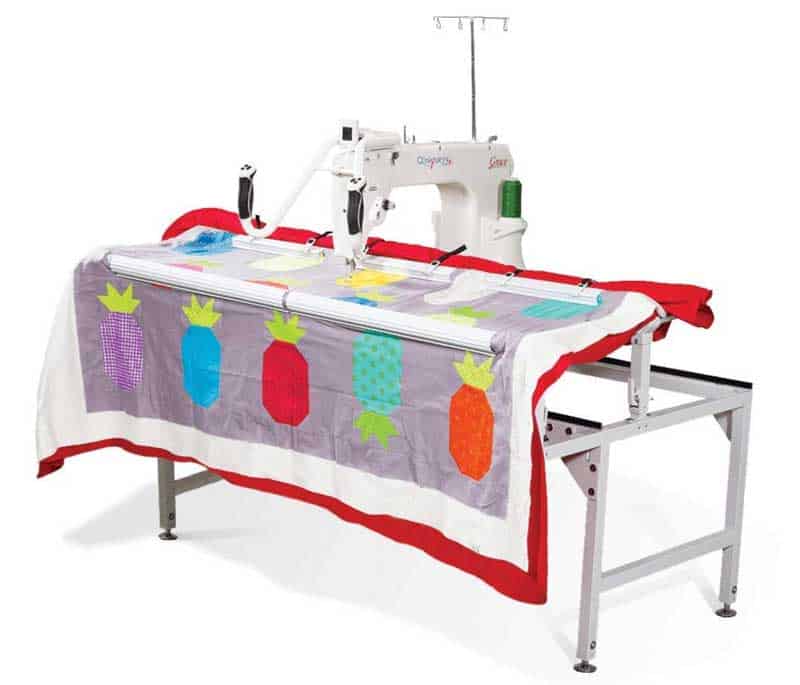
The ability to grow and add on as my quilting progresses is very attractive to me. I don’t know when or if I’ll ever progress to this level, but I liked the idea of being able to grow my skills for a reasonable price. With new longarm quilting machines in the $20,000 range and used ones about half that cost, I knew that having a long arm quilting machine was financially beyond my reach.
Until that day arrives, there are Craftsy classes for learning free motion quilting and some use the Juki TL-2010Q. By following along in the class I’ve been able to learn how to use my machine more effectively. I’m still learning and most of my work is what I would label as needs improvement. However, I understand that it takes a lot of practice to master free motion quilting. For now, this is an excellent class for newbies like me. (affiliate)
I purchased my Juki locally at the end of the year and got an awesome deal from a local dealer. I was able to negotiate a price of $800 and this was likely due to the fact that Christmas had passed and it was almost the end of the year. Since most dealers are small businesses that need to balance inventory, sales, and taxes this was a real win for both of us.
You can also purchase the Juki through an online dealer but the price won’t be as negotiable. I know one person who did this and she had a good experience although I always recommend you work with a local dealer if at all possible.
Finally, if you’re thinking about getting a similar machine I suggest you do your homework. I spent almost a year thinking about buying this machine. I tested it out three different times and then mulled it over again and again. During that time I would practice free motion quilting on my Bernina while considering how much use I would get from the Juki.
In the end, a mechanical machine that is designed for quilters seemed like the most cost-effective way to advance my quilting skills and still have plenty of money left over for buying fabric!


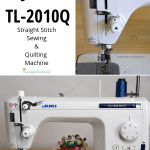
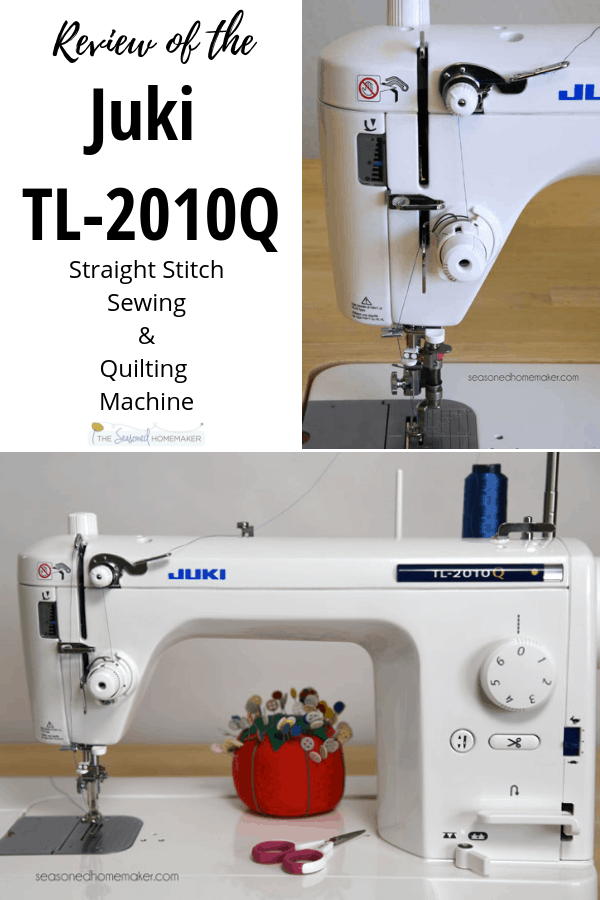
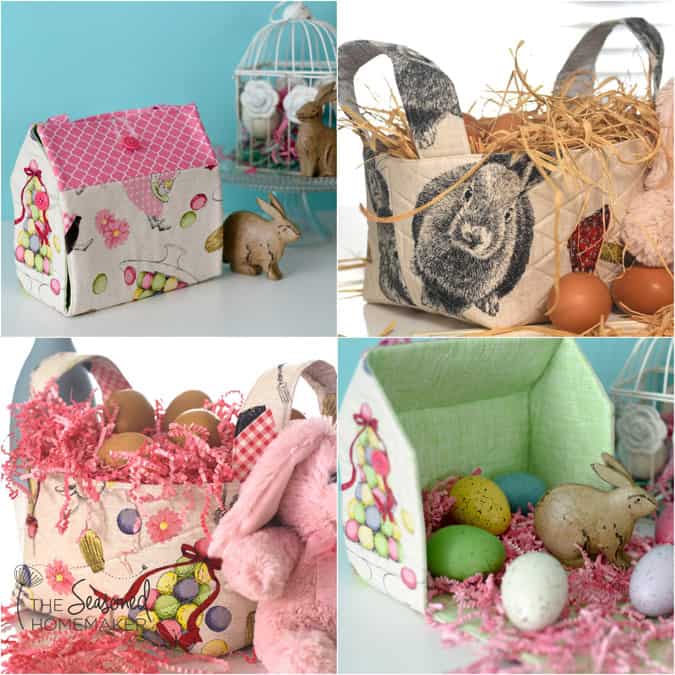
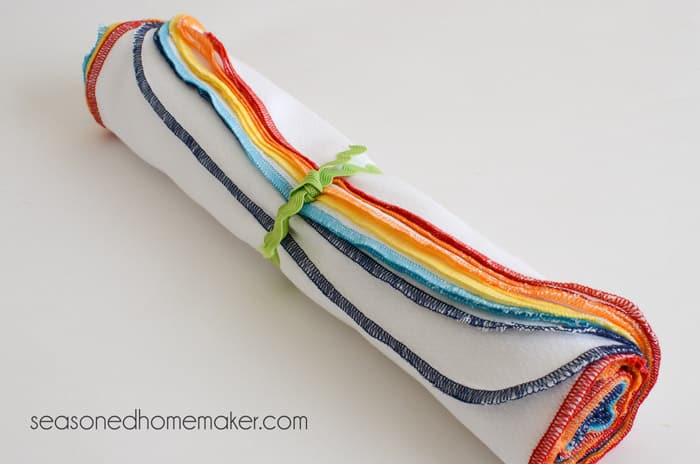

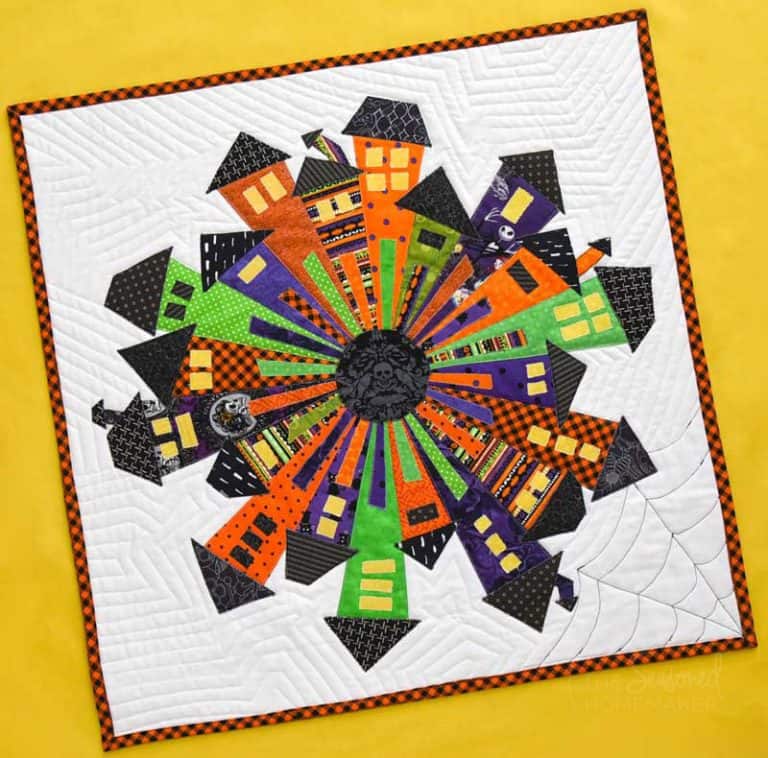
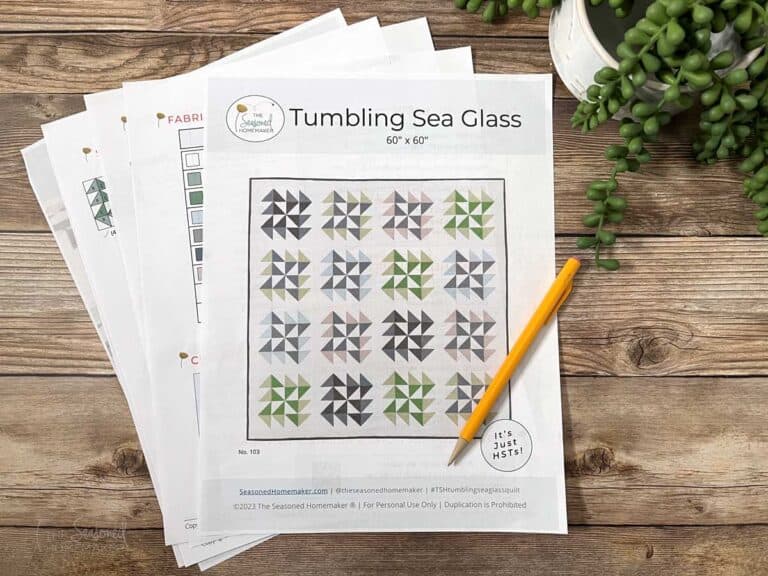
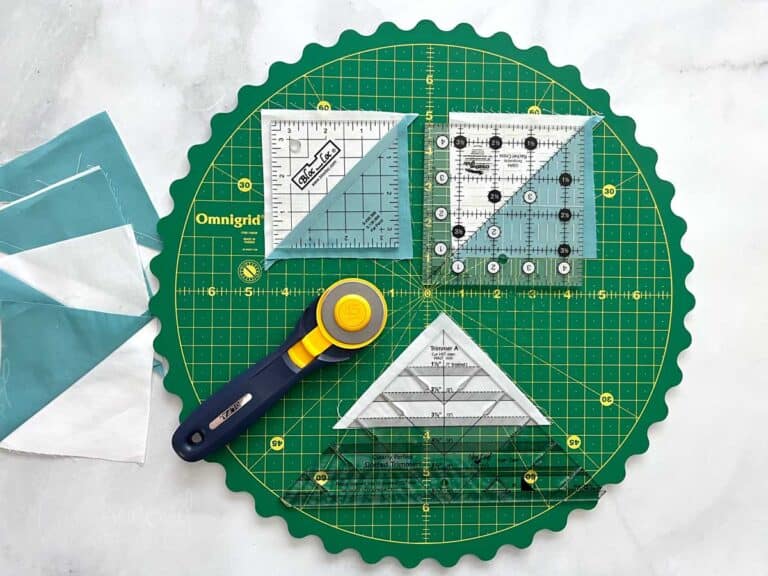
Excellent post with such good information. Having the right “tools” for the job always makes for a better experience. Thanks for sharing. I look forward to seeing all the projects you will be doing on this machine.
Excellent review. I purchased this same machine a few months ago and I absolutely love it. I feel it was an excellent and affordable investment. I have yet to master the free motion quilting but, I will. It’s my goal. In the meantime I have been using my Juki for all kinds of projects. I am amazed at the ease of sewing through many layers and bulky seams. I will be keeping my eye out for a used Grace frame too. Althou, I have the same problem as you. I don’t know where I’d put it.
I bought mine a year ago and love it as I do non-stop bridal sewing. It can power through satin hems and netting like crazy and the bobbins hold lots more thread than plastic home machines. I have bought loads of cool feet like one sided zipper feet. Mine came with a portable table and I just use an Ottlite attached to the main table for extra light.
A girl can never have too many sewing machines. I am getting used to my Viking Designer 1 embroidery machine, but do plan some where down the line to get into quilting. So many projects and so little time!
“A girl can never have too many sewing machines” Nor can a guy.
I have 3 machines. Viking Emerald 116 that bounces on my table when I floor the foot pedal, a slightly heavier Pfaff plastic trash thing that hides when I show it thick stuff. and a Pfaff oldie from the 50’s that I haven’t even set up yet.
Juki is coming to my house soon. It’s going to work long stitch lines for tarps, hammocks and quilts for backpacking.
Hey Jeffrey, you bet men, women, boys or girls..no one can have too many sewing machines.
Tarps, hammocks, etc..sounds like you do
heavy sewing. Good for you. Enjoy!!
This machine seems comparable to my Baby Lock Quilter’s Choice Pro (now called “Jane”). Straight stitch, left bobbin, threading, so-so feet but without that heel needle cutter and fast/slow feature. I, too, have several Bernina’s and an HQ Sweet Sixteen sit-down, but my Baby Lock is my go-to machine and it never fails me. It does not intimidate as the Bernina’s sometimes do, there is no computer to count your minutes and give you the dreaded “time for service” notice or take 5 minutes of your sewing time singing to you while it boots, the stitches always work without the tension fussing of the SS16, and it just feels heavy-duty (I make pet beds on it). I wish you the best of stitching with your new machine and hope you grow to love it as much as I do mine.
I am so glad you discovered and posted the link for your lighting strip by Inspired Lighting. They are the most economical and I have them on all my machines now. The light is good and they STICK (unlike the others that always fell off and were 3x the price). I’ve posted links on HQ and Bernina Yahoo groups in hope of getting the word out about these amazing lights.
where can you purchase these lights????
Here’s an afflink (it’s also in the post).
Leslie, I have a Little Gracie II frame I’d love to sell if you are interested. I’ve never been able to use it because the kind of quilting I do works much better as free motion on my domestic machine. I’d love to talk to you about it. I’m in Austin!
hi … love your review … i want to know this, though: 1. does it ONLY do meandering, stipple, free motion quilting or 2. does it also do straight line quilting with a walking foot?
thanks for your review and i’m awaiting your thoughts …. lots of people i know have this machine, but i’ve just gotten into straight-line quilting and have not asked them yet …..
darlene
i should have added this lighting link … i have two of these lights and they are a.m.a.z.i.n.g. http://www.ecoluxlighting.com/Home.html
darlene
I have used Gutterman thread in Juki TL-2010Q machine and it breaks like crazy. Can you give me recommendations for thread brand, weight and size that works well for machine piecing and quilting ?
I prefer to use Aurifil 50 wt. thread on my Juki for both piecing and quilting. Many quilters also love Aurifil threads, too.
I just got a Juki 2010 and cannot get the tension to work well. I think over adjusted the tension disc and now cannot seen to get it back to where it was. I bought this online cause the local store wanted $1,000 and I got it for $888 and free shipping. I finally figured out the auto threader but now stuck on tension. I have never used a mechanical machine before so it is a challenge for me. If I can get the tension to work I then will be able to sew on this machine. Any hints or suggestions?
I recommend you speak to a local Juki dealer or contact the dealer where you purchased your machine. They will be able to help you get the tension corrected.
I got my Juki last monday – love it already. The tension was set on 2 as a default. Sewing 2 layers of thick felt required clockwise turning to nearly 4. The dealer told me that the foot has to be in the up position during threading, otherwise the thread won’t go in the right place. Tension 2 worked perfectly for cotton fabrics and for free motion quilting of tablets
I too had trouble with the tension, it takes some getting used to. I have learned to lower tension to two, and then a bit lower if not right. Heck the bobbin tension also. If using a 40 wt thread may need to up tension a bit maybe 2.5. Good luck it is frustrating to get a new machine and have trouble with it
I have been toying with the idea of starting a small quilting side business and was trying to decide on a full size long arm and was overwhelmed with the options available. You review just pegged what I think might be the perfect starter plan – there is one of these machines on CL, then get a Grace Frame (could NOT remember the name of them!). YAY!
Thank you for your review — nothing replaces real people using a machine — NOT a salesman. It takes time to research it, actually buy it, USE it, and put your thoughts / pics / down on paper for the rest of us to read. Thank you…. thank you.
Great review. Thank you. There don’t appear to be many retailers selling Juki in Australia which can create servicing and training problems. Your review has encouraged me to track down a demo machine and try it out. I am also a beginner quilter with 2 Berninas.
You’ll be right at home the with the Juki.
I purchased a Juki 2010Q several years ago thinking I could use it on a large used quilting frame I had purchased. Long story short I could not master the free motion without a stitch regulator which the frame did not have. Because I was also having back issues when using the frame, I decided to sell it but kept the machine. I also have a Janome 6600P and a Viking Rose plus a couple older machines. If I use the Juki, it is for free motion. I am wondering what kind of table you have your machine on. I have mine inset in a table I bought at Joann’s and it is not satisfactory. For one, it is wobbly. Second, the surface around the inset seems to create drag on quilts. I purchased a teflon sheet and that appears to help but the table is really too small for quilting projects. At this point, I have considered getting a sit-down machine such as a Sweet Sixteen or a Tiara and then selling the Juki. But part of me thinks I need to master this Juki because so many people think they are great machines. I am very comfortable piecing on my Viking and using my Janome for walking foot work or decorative stitches. I just need a suitable set up for free motion.
My Juki is inset into an old wooden table that was given to me. My husband sanded the edges smooth and nothing snags on it. As for a sit-down machine, I have not spent much time working on either of the ones you mentioned. I recommend finding a local dealer and seeing if you can rent time on the machines you’re interested in purchasing. After a few hours, you’ll know which one works best for you.
I am thinking about this machine as quilting is what I really like to do. I have started to learn to free motion quilt, the machine that I am using is a Singer that I recieved for a wedding present in 1986. (I know, but I love that machine it is a rock solid machine). I appreciate the in depth review and great photos. Thanks. Lisa
I found your machine was a juki.Just think I would have to go through everything that you have gone
through with your new machine.I don’t think a Juki would be for me.I was looking for another Bernina because of the attachments that I have.Thank you and have fun.Shirley Caldwell
Where did you get the table/cabinet for your Juki?
The table was given to me by a friend – it’s an inexpensive pine table. My husband countersunk the hole. We followed this tutorial. http://www.makeithandmade.com/2013/11/easy-diy-ikea-sewing-table-hack.html
Thank you!
I have a question about the table too. How difficult is it to access the bobbin loading area for the machine when it’s that snug? I would like to do the same setup, but am concerned about accessibility.
We left a large opening at the other end so it would be easy to shift the machine to get to the bobbin. But it has never been an issue. The table extension that comes with the machine creates the same situation but there is enough room to get the bobbin in and out.
Good to know, thanks.
Does anyone use this to make handbags?
Yes! It’s an ideal machine because it’s straight stitch only and has a powerful motor. You may need to upgrade the feet, but otherwise it would be great.
Thank you Leslie. I was hoping it would go thru some layers. . I didn’t want a full industrial because I like to quilt too
Thank you for asking this question. I was wondering this too as I love making handbags and I need something to go very thick seams especially in topstitching.
This is an excellent review, thank you. I am wondering how the stitches look when you sew very rapidly. I also have a Bernina. I’ve taken to using glue basting to improve my accuracy in piecing and this allows me to sew very rapidly. But, my stitches on the Bernina get really tiny when I sew fast, even though I have set the length to be much longer. I’m wondering how this works for everyone else. Thanks.
Stitch length is very consistent as long as the feed dogs are up. When they are down it really takes practice to get a consistent stitch length.
Thank you for your thoughtful answer. I should have said that I was concerned with the piecing when the feed dogs are engaged. Happy to know this.
Thank you so much for this post. I had a beginner quilter question regarding tying off threads. I know how to do it during free motion but if I’m straight line quilting do you have to pull up threads and then tie them yourself and then bury the threads? Computerized machines have the lockstitch but juki doesnt. Just wondering how this works with mechanical machines.
If you drop the feed dogs and sew in one position, it will lock your threads. Then raise to feed dogs to start quilting.
Or lower stitch length and sew in place a few stitches, this is what’s Jacque Gerring does.
About oiling the machine. Is it easy? and how often do you have to oil it?
I’ve used an industrial Juki before and no need to oil those.
With my home machine (Bernina) I only oil per project.
It’s best to check with a local dealer who carries your particular machine. They will know exactly how much to oil.
I have an inexpensive Brother machine, but I am thinking of upgrading. My main concern with this machine is not being able to see the bobbin. With my Brother, the bobbin is visible, and I still run out of bobbin. How do you manage to monitor or gauge your bobbin thread level?
Tricky question. The honest answer is I make several bobbins ahead of time for large projects. When one runs out I pop in a new one.
I finally decided to purchase this machine and I am having a problem with the thread cutting too short when I use the automatic thread cutter. Sometimes it comes out of the needle and I have to re-threaded over and over. Other than that, it is a great machine. Any suggestions on how that cut thread could be left longer?
I recommend contacting a local dealer who sells your machine. There may be an adjustment that I’m not aware of.
Do you use a stitch regulator to do your quilting? I have a Juki TL2010Q and I really, really like my machine a LOT,
I am planning on getting the new Q-Zone hoop frame for it and wondered if a stitch regulator is something that I will nee or would be helpful when doing my quilt tops.
Thank you advance for your answer 🙂
I never needed it. With the Juki it’s not really that hard to get even speed which equals even stitches. Just a little practice is all you need.
Have you purchased a quilt frame yet? If so what did you buy?
The long answer is yes! I purchased the SR2 frame (which Grace has replaced with the Q-Zone). In 2017 I purchased the Continuum Frame and the Q’nique 14+ (now Q’nique 15). I couldn’t be happier.
Thank you for your very helpful review.I noticed you have your Juki TL2010 fitted into a flatbed table. How do you get into the side bobbin? I also noticed you have space to the right between the side of the machine and tabletop. Are you able to slide the machine to the right so you can get into the bobbin casing?
Yes, I move the machine a bit to get the bobbin. It’s really a non-issue.
Thank you Leslie,
The machine extension table has a small opening next to the bobbin compartment.
I assumed this was necessary to get into the side bobbin casing.
So If the machine was completely fitting to a table-top, It would not be difficult to take out the bobbin?
Leslie, My Juki is set up in an EZ-Sew table but I’m thinking about getting something more permanent. Would you have any recommendations for cabinets?
This post should help you make a good decision: https://www.seasonedhomemaker.com/choosing-best-sewing-cabinet-space/
This review was so helpful! I am not a quilter (maybe in the future?) but have a home decor Etsy shop where I make throw pillows all the time with thick, layered (lining) fabric. A local shop recommended this machine to me so I am reading all about it. Do you still like it? Happy with your purchase? I’m looking for a workhorse!
I still love this machine. And, yes, it is a workhorse. I do recommend that you oil it regularly so it will continue to run like a champ. I’d recommend it to anyone looking for a heavy duty machine.
How well does the Juki work with the walking foot in “stitch in the ditch” quilting. If the Juki can go through several layers with no problem, do you even need to use the walking foot attachment! I heard the attachment is not too pleasant.
Thanks for your advice.
The Walking Foot has more to do with the fabric not shifting or “growing” while sewing. The Juki Walking Foot isn’t as nice as others. I’ve heard about using a Janome walking foot (????), but I’ve never tried it.
Aloha, I’ve been hemming and hawing about getting a Juki 2010Q for about 9 months. I haven’t seen anyone locally that sell Juki here in Hawaii, so I’ve been checking online too. I think I’ve finally made up my mind with whom I’m going with.
Your article was quite helpful, thank you very much! I can do the quilting, the bags as well as sew clothing on the Juki. My other machine is great for the buttonholes, blind hemming and appliqué
Thanks again!.